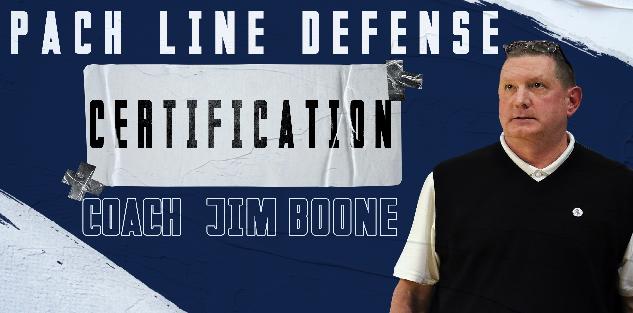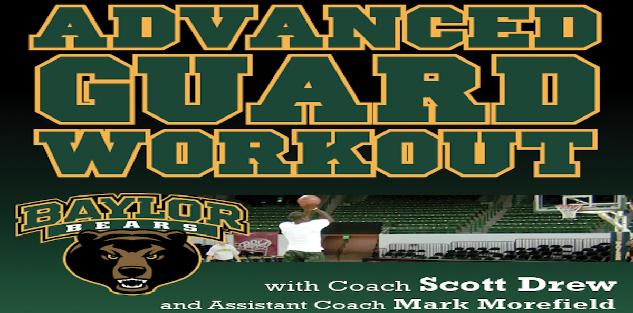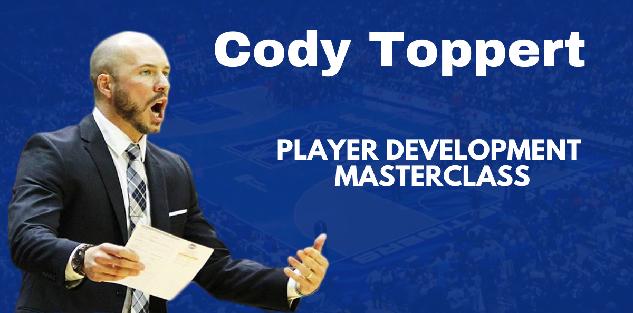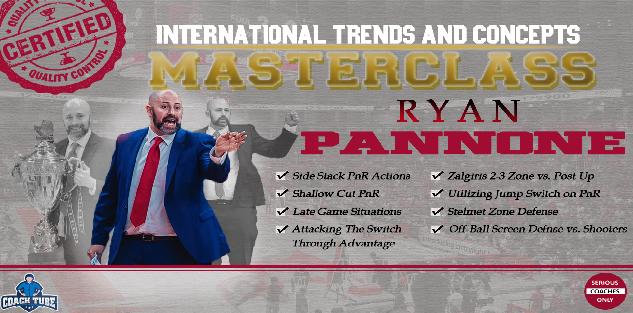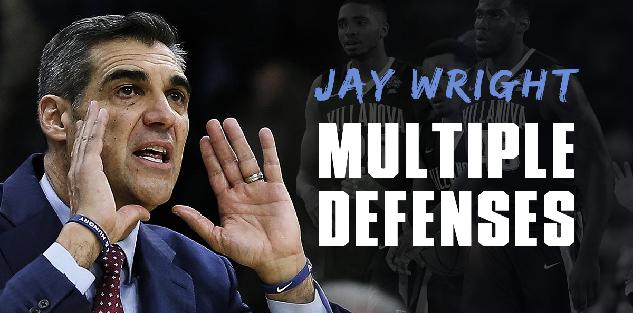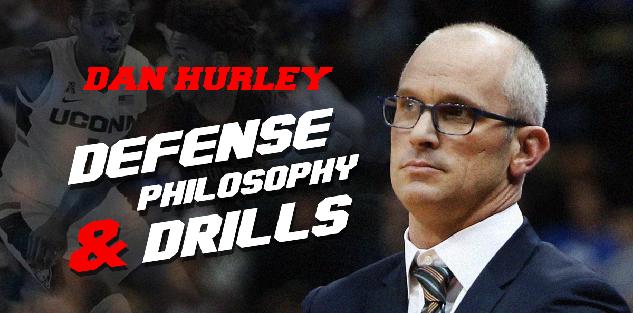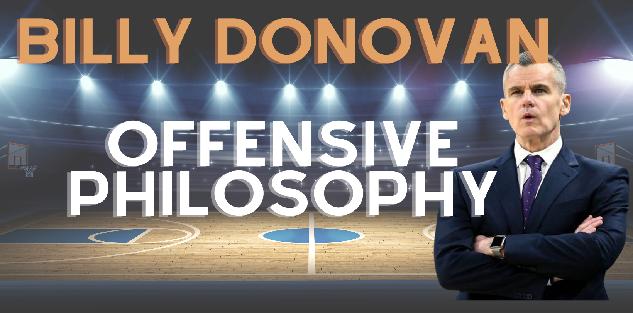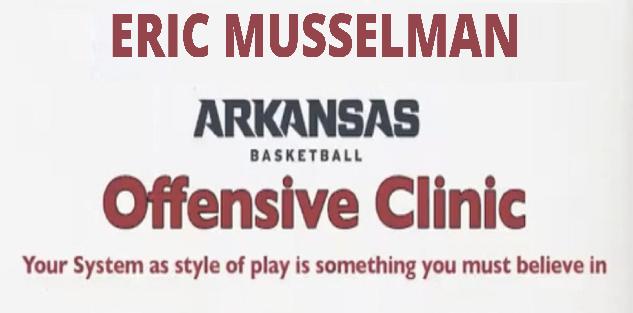Featured courses
- Two Great Game Situational Workouts For the Basketball Offseason by Grant Young
- Two Reads Basketball Players Must Understand Before Executing the Ball-Screen by Grant Young
- Two of LSU Coach Kim Mulkey’s Game-Winning Inbounds Plays by Grant Young
- Three Effective Early-Season Defensive Basketball Drills by Grant Young
- Four Essential Tips For Basketball’s 1-3-1 Zone Defense by Grant Young
- Four Zone Defense Drills to Strengthen Your Team by Grant Young
- How to Beat the Three Most Common Pick and Roll Coverages by Grant Young
- Two Drills to Improve Shooting at the Start of the Basketball Season by Grant Young
- Core Basketball Principles That Dallas Mavericks Coach Sean Sweeney Teaches by Grant Young
- Three Competitive Shooting Drills For Your Basketball Team by Grant Young
- How To Teach The ‘I’ Generation of Basketball Players by Grant Young
- Three Elite Drills to Begin a Basketball Practice With by Grant Young
- How to Build a Championship-Winning Basketball Team Culture by Grant Young
- Two of Texas Women’s Basketball Coach Vic Schaefer’s Tips For Team Culture by Grant Young
- Atlanta Dream WNBA Coach Brandi Poole’s Four Sets for Secondary Offense by Grant Young
- NC State Basketball Coach Brett Nelson’s 4 Crucial Point Guard Qualities by Grant Young
- Kentucky Coach Mark Pope’s Five Guard Rules For Offense by Grant Young
- McNeese State Basketball Coach Will Wade’s 4 Core Pillars by Grant Young
- 4 Tips To Instantly Improve Your Free Throw Shooting by Tyler Linderman
- Assemble a Championship-Caliber Basketball Rotation by Brandon Ogle
- Two of UConn Coach Dan Hurley’s Key Defensive Drills by Grant Young
- Four Post Moves All Basketball Forwards Should Have In Their Bag by Grant Young
- Four of Baylor Coach Nicki Collen’s Midseason Pick and Roll Adjustments by Grant Young
- WNBA Legend Sue Bird’s Two Tips For Attacking on Offense by Grant Young
- Houston Coach Kelvin Sampson’s Three Keys for Building a Basketball Program by Grant Young
- Two of Tom Izzo’s Top Michigan State Defensive Drills by Grant Young
- Four of Olympic Gold Medalist Coach Mechelle Freeman’s Relay Race Strategies by Grant Young
- Three Key Strategies Will Wade Uses to Build a Dominant Team by William Markey
- Five UConn Huskies Men’s Basketball Plays That You Can Use by Grant Young
- Three Tips for Maintaining Team Culture at the End of a Basketball Season by Grant Young
- Three Dribble Drive Motion Drills to Teach Your Basketball Team by Grant Young
- Three Dribbling Drills For Non-Primary Ball Handlers by Grant Young
- Four Advanced Ball Handling Drills For Basketball Guards by Grant Young
- Three Tips to Sharpen Your Post Player’s Footwork in Basketball by Grant Young
- These Three Pick and Roll Drills Are Crucial For Any Ball Screen Offense by Grant Young
- Three Closeout Drills to Improve Basketball Shooting Defense by Grant Young
- Three Tips to Perfect the Packline Defense in Basketball by Grant Young
- Four Keys to Executing the Read and React Offense in Basketball by Grant Young
- Three Tips to Develop Elite Basketball Shooters by Grant Young
- Three Crucial Keys to Executing the 5 Out Offense in Basketball by Grant Young
- These Three Offensive Sets Will Help You Beat Any Zone Defense by Grant Young
- Three Transition Basketball Drills To Play With More Pace by Grant Young
- Three 5 Out Offense Drills Any Basketball Coach Can Use by Grant Young
- Four Vital Techniques for a Motion Offense in Basketball by Grant Young
- Three Baseline Inbounds Plays To Win Your Basketball Team Games by Grant Young
- Four Drills For Sharpening the European Ball Screen Offense by Grant Young
- Three Positioning Tricks For a Basketball Zone Offense by Grant Young
- Three Rules to Perfecting Basketball's Lock Left Defensive System by Grant Young
- UCLA WBB Coach Cori Close’s Two Keys to Winning the Mental Game by Grant Young
- Four of Alabama Coach Nate Oats’ Favorite Basketball Drills by Grant Young
- Three Ways To Turn Transition Offense in Basketball Into Points by Grant Young
- Three Drills to Master Basketball's Pack Line Defense by Grant Young
- Three Transition Defense Drills to Halt Fast Breaks by Grant Young
- Four Offensive Rebounding Drills to Win Second Possessions by Grant Young
- 4 Defensive Technique Drills from Boston Celtics Assistant Coach Brandon Bailey by Marek Hulva
- 5 Drills to Improve Ball Handling by Tyler Linderman
- 13 FUNNY BASKETBALL GIFS by Alex
- BASKETBALL SPEED AND AGILITY: 8 QUESTIONS FOR COACHTUBE EXPERT RICH STONER by Jaycob Ammerman
- Defensive Strategies for Basketball by Ryan Brennan
- 4 Keys To Turning Your Program Into Championship Contender By Dallas Mavericks Coach Sean Sweeney by Marek Hulva
- 5 Components to Creating a Winning Basketball Program by Justin Tran
- Guide to Becoming a Lethal Scorer in Basketball by Justin Tran
- Zone Defense In the NBA Eastern Conference Finals by James Locke
- Mastering Court Mobility: Tips for Effective Movement in Basketball by Justin Tran
- 5 Basketball Shooting Drills: How to Develop a Sharpshooter by James Locke
- 6 Points of Emphasis for a Successful 5 Out Offense by Jaycob Ammerman
- Effective and Efficient Methods to Practice During the Basketball Season by Justin Tran
- Three Great Passing Drills From a Basketball Coaching Legend by Grant Young
- 7 Principles For Perfecting the Princeton Offense in Basketball by Grant Young
- How to Replicate A Modern NBA Offense by Grant Young
- Three Great Two-Ball Dribbling Drills For Basketball Development by Grant Young
- Two Rebounding Drills to Win Your Basketball Team Championships by Grant Young
- How to Improve Your Basketball Team’s Defense With the Shell Drill by Grant Young
- How Baylor Basketball’s Scott Drew Develops Elite Guard Play by Grant Young
- Off-Ball Movement Tips and Strategies: Lessons From the NBA Finals by James Locke
- Player Development: Scott Drew’s Tips for Producing NBA Guards by James Locke
- How to Execute a Spread Offense in Basketball by Grant Young
- Four Quality Quotes From Four Final Four Coaches by Grant Young
- A Guide to the Pack Line Defense by Alex Martinez
- 3 Defensive Build Up Drills to Improve Team Basketball Defense by Grant Young
- Battle of Two Great Coaches: Best Plays from the NBA Finals Contenders by Justin Tran
- 10 Creative Ways Athletic Programs Can Use a Video Board to Raise Money by Coach Williams
- How to Use 3 on 3 to Improve Your Basketball Team by Grant Young
- How to Defend the Pick and Roll by Grant Young
- Mastering Basketball Defense: Techniques, Drills, and Strategies for Success by Justin Tran
- Three Tips From The Coach Who Developed Giannis Antetokoumnpo by Grant Young
- 2023 NBA Draft: Skills and Technique from Top Prospects by Justin Tran
- From College to the Pros: Transitioning the Dribble Drive Offense by Justin Tran
- Positionless Basketball: Redefining Roles on the Court by Justin Tran
- Revolutionize Your Offense: Proven Concepts to Elevate Your Basketball Game by Justin Tran
- 5 Essential Fastbreak Drills Every Basketball Coach Should Know by James Locke
- How to Run a Circle Offense in Basketball by Grant Young
- Game-Changing Strategies: ATO Plays in the EuroLeague and Olympics by Justin Tran
- How to Stand Out at Basketball Tryouts by Grant Young
- How to Improve Your Basketball Team’s Transition Defense by Grant Young
- Indiana Fever GM Lin Dunn’s Two Keys For Women’s Basketball Coaches by Grant Young
- Strength Training Strategies Every Basketball Player Should Have by Grant Young
- A WNBA Basketball Coach’s Four Priorities In Transition Defense by Grant Young
- Three Adjustments to Make When Your Basketball Offense Isn’t Working by Grant Young
- Three Pillars to Applying Defensive Pressure on the Basketball Court by Grant Young

Three Tips to Perfect the Packline Defense in Basketball
- By Grant Young
The packline defense strategy has been one of basketball’s most effective ways of winning games on the defensive side of the ball for decades.
For those who aren't aware, packline defense is a defensive strategy in basketball that focuses on protecting the area close to the basket. It involves clogging the paint with defenders to prevent easy scoring opportunities inside. The defenders collapse into the key to help with penetration and discourage opponents from driving to the basket. The packline defense is known for forcing opponents to take outside shots and limiting high-percentage scoring chances in the paint.
The packline defense has proven to be effective for countless means for multiple reasons:
1. It limits dribble penetration and discourages opponents from driving to the basket by clogging the paint with defenders. This makes it difficult for the opposing team to score easy baskets near the rim.
2. It forces opponents to take outside shots, which are generally lower-percentage scoring opportunities compared to shots in the paint (especially at the game’s amateur levels).
3. By packing the defense inside, teams using the packline defense can also effectively help and recover to contest perimeter shots.
Despite these clear benefits when done correctly, the packline defense can also prove disastrous for coaches and teams that attempt to employ it without understanding the crucial cogs in its wheel, so to speak. This is why having a defensive whiz like Chris Mack illustrating some crucial tips and tricks when instituting this defense can be a life (and game) saver.
Coach Mack is the new men's basketball head coach at the College of Charleston. Mack, whose teams have participated in the NCAA Tournament in nine of his 12 seasons as a head coach, guided Louisville to a 24-7 record and a 15-5 ACC mark in 2019-2020.
Before joining Louisville, Mack spent nine seasons as the head coach at Xavier, guiding the Musketeers to eight NCAA Tournament appearances, including reaching the Sweet 16 on four occasions.
Coach Mack’s ‘Packline Defense Philosophy’ course goes into the basic concepts and principles behind the packline Defense, reviewing philosophy, basic positioning, and adjustments all coaches should know.
Packline Rules and Dribble Penetration
Coach Mack suggests taping the line of where he wants his packline defense to operate within (at around 16-17 feet from the basket) during practice each day so that his players get a visual representation of where they should be located.
The basic packline defensive rule for players who aren’t guarding the ball is that if your man is off the ball, you should always have two feet inside that packline.
While there are exceptions to this (such as when dealing with ball screens and chasing a cutter), the general sentiment is that the defense wants to be as closely compacted as possible within that packline without it hindering their mobility outward.
“I think nothing beats defenses more than dribble penetration,” Coach Mack says. If you feel the same way (or want to limit dribble penetration as much as possible), the packline defense is the perfect fit for your team.
Coach Mack believes this style of defense is especially effective in the modern game because players have never been better at ball handling and attacking the paint than they are right now. While the same can be said for shooting, an open three-point shot is always going to be made at a significantly lower percentage than a layup or a free throw.
Closeouts
Since your off-ball defenders are so far away from perimeter players on offense within the packline, knowing how to execute a quick and effective closeout might be the most important aspect of this defense for coaches to understand.
Coach Mack generally teaches two high hands on a closeout, keeping elbows bent so that the players are more reactive and remain in an athletic position in case the player tries to jump fake and dribble past them. In addition to this, Coach Mack stresses short and choppy steps while keeping the stance as square to the basketball as possible (and not open, in other words).
The reason Coach Mack stresses high hands is because:
1. To discourage the open rhythm three (which is when many offenses will rely on when playing against the packline defense).
2. To disrupt vision, because having low hands because the offensive player can easily see and pass the ball into the post.
But he is willing to adapt to the high hands strategy when working with players who aren’t as athletic because having their hands high will likely make them susceptible to getting beat off of the dribble.
Once the three-point shot is taken away, the closeout defender wants to be as disruptive to the basketball as possible, potentially knocking the ball away or creating a steal.
Closest Man to the Basketball
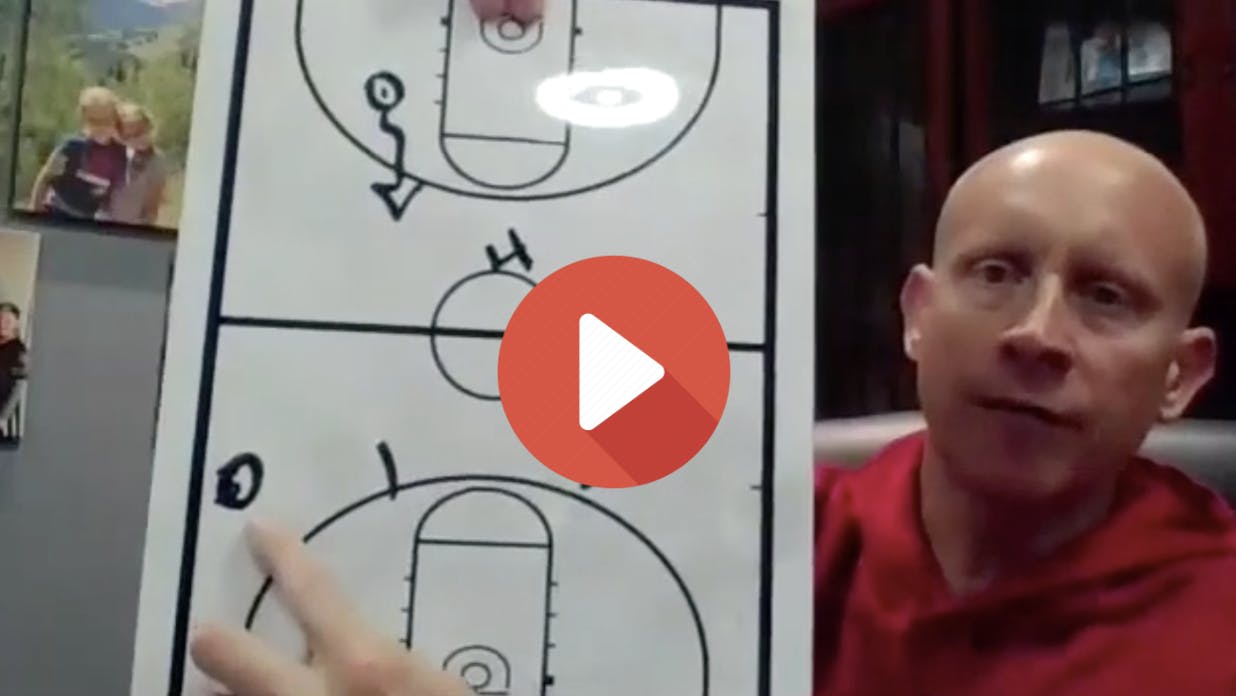
Coach Mack explains that after any made shot, he expects his players to get back onto their own man. But on a missed shot, there should be some sort of rules and guidelines both players and coaches can abide by so there are no blown assignments that result in easy baskets for the other team.
In this case, Coach Mack’s rules are that whichever player is closest to the man with the basketball has to declare it and stop it. It doesn’t matter if it’s a power forward or the point guard, whoever is closest to the ball should be the one who stops the initial transition. Then once play slows down and transition is halted, the players can switch to their correct man.
This frees up the guards and whoever is first back on transition defense to guard the players who are streaking along the wings or down the middle of the court in transition, expecting a pass.

